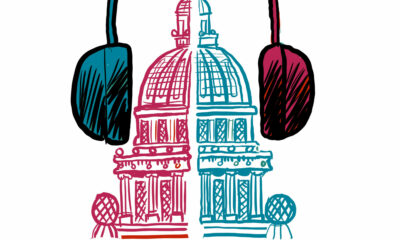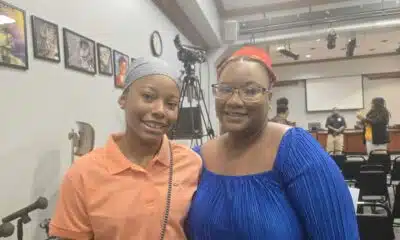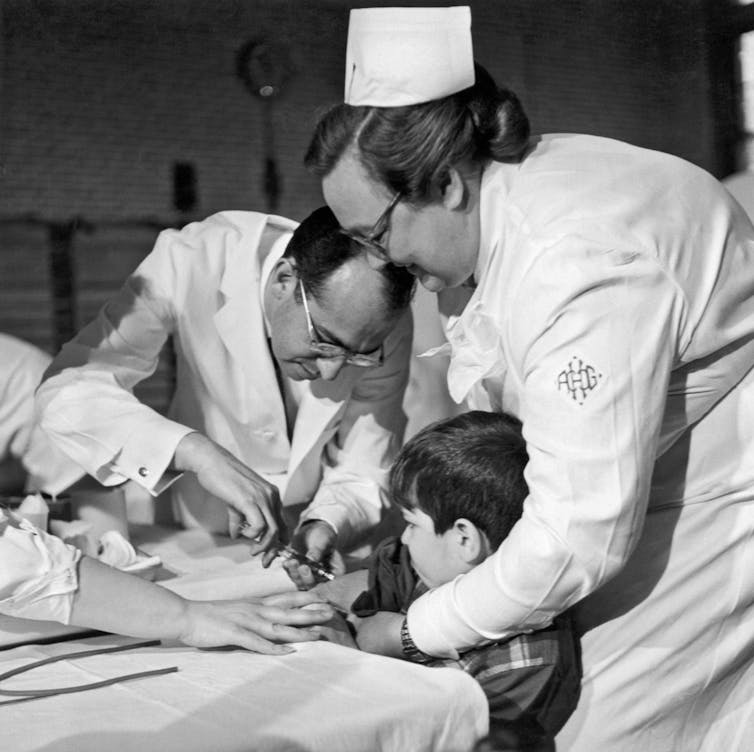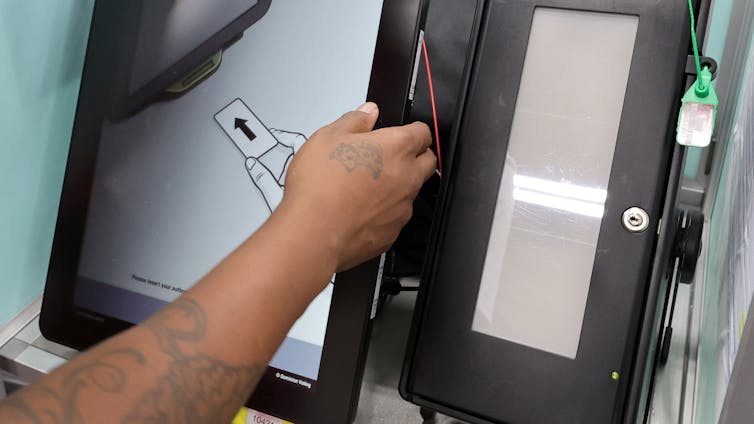
Alastair Pike/AFP via Getty Images
Joe Smith, University of Tennessee
A perentie lizard in Dallas, an African penguin in Boston and an Oberhasli goat in Chicago are just a few recent examples of animals at zoos and aquariums benefiting recently from acupuncture therapy. As acupuncture has gained wide use in human medicine in the U.S., it also has become increasingly common in veterinary practice, especially for pain management.
The Conversation U.S. interviewed University of Tennessee Assistant Professor of Veterinary Medicine Joe Smith, a specialist in farm animal medicine and veterinary clinical pharmacology, about this trend. He describes acupuncture’s current uses for treating many species, from household dogs and cats to large animals like horses, cows and llamas:
Is veterinary acupuncture modeled on the traditional Chinese version?
There are two schools of thought about veterinary acupuncture. The original form of acupuncture, which has been practiced for thousands of years, follows principles of traditional Chinese medicine. It views the patient through a lens of five elements: wood, fire, earth, metal and water.
Each element is associated with a different type of energy. Practitioners work to maintain balance between those energies, which they believe is essential for a healthy body to function.
Another approach focuses on anatomical effects on the body. Practitioners place needles to achieve specific effects by stimulating muscles or nerves.
Both versions of acupuncture can help veterinary patients. They use very small, flexible needles, about two-tenths of a millimeter wide – less than one-hundredth of an inch. The needles are placed at various parts of the body to elicit specific responses from connective tissues, muscles and nerves.
The needles can be used by themselves, or with low levels of electrical current – a process called electroacupuncture. Both approaches are effective, but research suggests that benefits from electroacupunture last longer.
What does research show about using acupuncture on animals?
Acupuncture and electroacupuncture both increase the body’s levels of compounds called endogenous opioids. These are pain-relieving substances that the body produces naturally. They work similarly to pharmaceutical opioids, such as fentanyl and morphine.
Acupuncture increases these compounds so dramatically that the effect can be reversed with opioid antidotes, such as Narcan.
Studies in small animal medicine show that using acupuncture can speed up healing from nerve injuries, such as spinal cord damage from herniated disks. This is a condition in which material from the disks in between the vertebra of the spinal cord is damaged, and puts pressure on the spinal cord and other parts of the nervous system.
Herniated disks can be very painful for animals. A 2023 study found that when dogs with this condition were treated with acupuncture, nearly 80% recovered, compared with 60% of animals whose cases were managed conservatively without acupuncture. Acupuncture can also make other techniques, such as epidural nerve blocks, more effective when both methods are used together.
Many vets are using acupuncture creatively for other purposes, such as increasing sick animals’ appetites, improving their digestion and accelerating healing from injuries.
How does your veterinary medicine group use acupuncture?
Our practice at the University of Tennessee has used acupuncture most extensively to help rehabilitate animals recovering from conditions like radial nerve paralysis and femoral nerve injury. We can use acupuncture to stimulate muscles or to provide pain relief, either by itself or combined with other therapies.
In our Farm Animal Hospital, we regularly use acupuncture for recumbent or “down” animals. That’s a veterinary term for animals that have been unable to stand for extended periods of time.
With acupuncture, and occasionally electroacupuncture, we can stimulate muscles and nerves that aren’t functioning normally. This help to prevent atrophy, or wasting and thinning of muscle mass.
For every day that a large animal is down, its muscles atrophy and fluid builds up around injured limbs or joints. These effects can prolong their recovery, or even make it less likely that they will recover.
By using acupuncture to stimulate atrophied muscles, veterinarians can start to reverse this process. We have used acupuncture extensively on large animals, including cattle, horses, llamas, alpacas, sheep, goats, pigs and even camels.
One example is goats that have spinal cord injuries caused by parasite migration – a condition called cerebrospinal nematodiasis, or “meningeal worm.” Worm larvae that normally are parasites of white tail deer infect goats through the animals’ digestive tracts, then migrate to the spinal cord and nervous system. They get lost and die there, causing inflammation that can do significant damage.
We use acupuncture and electroacupuncture to stimulate the goats’ large and accessory spinal nerves and the muscles in the animals’ legs and backs. This gives the goats more muscle function when the inflammation clears, and we believe it helps reduce their pain.
We’ve also had good results with acupuncture treatment for llamas and alpacas, which are widely used in Tennessee’s Smokey Mountains to carry tourists’ gear up- and downhill. As large animals like these age, they can develop osteoarthritis, a degenerative joint disease that’s incredibly painful and debilitating for them. Acupuncture and electroacupuncture can help keep them moving.
Our equine services mainly use acupuncture for rehabilitation, helping horses recover from injuries.
One advantage of acupuncture and electroacupuncture in large animals is that they don’t have many adverse effects. Drugs can have side effects such as nausea and diarrhea, and may cause potentially serious complications. An acupuncture needle placed by a trained veterinarian has few to no adverse effects when it’s done correctly.
Can pet owners be confident if their vet recommends acupuncture?
If there is a nerve or muscle involved, there is probably a veterinary treatment option using acupuncture or electroacupuncture. New studies regularly add to our understanding of the neurology and biochemistry that underlie these therapies.
Although we’re still learning, if your vet recommends acupuncture for an aging dog or cat – especially for chronic pain – you can be confident that it’s not a fringe treatment. As long as the person treating your pet is a licensed veterinarian, and is certified by a professional organization like Curacore, Chi University or the American Academy of Veterinary Acupuncture, acupuncture should make your pet more comfortable and improve its quality of life.
Joe Smith, Assistant Professor of Veterinary Medicine, University of Tennessee
This article is republished from The Conversation under a Creative Commons license. Read the original article.
























































